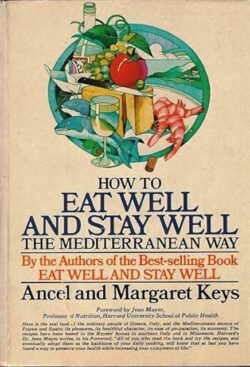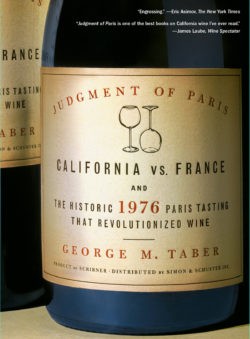Read Time: 5 Minutes Subscribe & Share
Feedback and Seismic Change
Clearly, we need more posts on olives and olive oil.Thank you to all who emailed with questions and comments after the last brief foray into olive oil history and the evolution of standards. It’s gratifying to know that even a thumbnail sketch prompted interest—and this post is an attempt to answer some of those queries, particularly about what to look for in the ever-expanding world of olive oil.
Most winemakers and wine merchants would agree that George Taber’s Judgment of Paris, published in 2005, was a watershed moment—at least in print. It chronicled the day when the myth of French vinous supremacy was laid to rest by a blind tasting in 1976. Taber was the only journalist present (serendipity in action), and his firsthand account remains a riveting read. If you’ve not yet picked it up, do – or download it to your e-reader and settle in with a wine spritzer as this summer swelters on. You can safely skip the film adaptation Bottle Shock which is a travesty of this book. Not even Alan Rickman could rescue it from its own California Shlock.
 The shift in global awareness about olive oil, however, did not hinge on one explosive moment. No judgment, no scandalous tasting. Instead, it was the result of quiet, deliberate, and far-reaching research—most notably by Dr. Ancel Keys and his wife Margaret, a biologist and chemist, respectively. Their 1975 publication, How to Eat Well and Stay Well the Mediterranean Way, was the first to map of what we now call the Mediterranean diet. Based on their studies of regional foodways in Crete, Greece, and southern Italy, their version of this diet was predominantly plant-based, but did include modest amounts of meat, fish, and dairy—and relied on olive oil as the sole source of fat.
The shift in global awareness about olive oil, however, did not hinge on one explosive moment. No judgment, no scandalous tasting. Instead, it was the result of quiet, deliberate, and far-reaching research—most notably by Dr. Ancel Keys and his wife Margaret, a biologist and chemist, respectively. Their 1975 publication, How to Eat Well and Stay Well the Mediterranean Way, was the first to map of what we now call the Mediterranean diet. Based on their studies of regional foodways in Crete, Greece, and southern Italy, their version of this diet was predominantly plant-based, but did include modest amounts of meat, fish, and dairy—and relied on olive oil as the sole source of fat.
Their findings were not just anecdotal. Subsequent studies showed statistically lower rates of cardiovascular and chronic disease in the populations they studied. Olive oil began to be seen not just as a cooking fat but as a healthful staple—and by the end of the 20th century, demand for higher-quality oils had exploded. First to catch on was the European market and then by the beginning of our current century, the US had created a consumer driven health food industry. Groves were expanded, cultivation methods refined, and commercial production was established even in countries that had never produced olive oil before. Today, thanks to global enthusiasm (and health marketing), beautifully crafted extra virgin olive oils arrive not just from Italy, Spain, and Greece, but from Croatia, Slovenia, Turkey, Australia, California—and yes, even Japan.
Another major driver of quality has been the modernization of oil extraction. While stone mills and straw mats look charming in tourism posters, they harbor residual flavors and impurities from previous pressings. The best extra virgin oils today are extracted using stainless steel centrifuges in clinically clean environments, with precise temperature control and short processing times. This matters because heat is the enemy of good olive oil: it damages flavor and nutritional value. Romantic though they may be, traditional extraction methods simply can’t compete.
Cultivars to Know (and Seek Out)
As some of you noted, olive oil labels are increasingly listing the cultivars used—good news if you’re looking to match an oil’s flavor profile to your dish. Here are a few Italian varieties worth getting to know:
-
Frantoio & Moraiolo – Often found in Tuscan blends. Frantoio brings a peppery sharpness, while Moraiolo leans spicy—some describe it as almost chile-like.
-
Leccino – Also grown in Tuscany and elsewhere, but mellower, producing a softer, rounder, and slightly sweeter oil.
-
Coratina & Peranzana – Common in Puglia, one of Italy’s olive oil powerhouses. Coratina is bold, intense, and high in polyphenols (those plant compounds touted by health gurus for their purported heart- and brain-boosting properties). Peranzana is fruitier and gentler, sometimes with hints of almond and artichoke.
-
Taggiasca – A Ligurian treasure, producing a gently nutty, herbaceous oil. Their table olives, by the way, are crowd-pleasers too.
-
Nocellara del Belice & Cerasuola – Sicilian specialties. Nocellara often tastes uncannily like tomatoes, while Cerasuola leans toward the sharper green tomato side.
-
Casaliva – Grown around Lake Garda in northern Italy, it yields an elegant, buttery oil that I’ve recently demolished happily on everything from fava beans to focaccia.
This, of course, is just a sampling. Italy may not be the largest olive oil producer (Spain holds that title), but it boasts the widest range of native cultivars—each with its own distinct flavor, texture, and intensity. Italian monovarietals and blends showcase these differences beautifully, and exploring them is one of the real pleasures of cooking here.
Further Exploration
If you’re curious to see who’s making what, the International Olive Oil Council holds an annual competition, with a helpful list of winners. The NYIOOC World Olive Oil Competition offers a particularly detailed guide, with tasting notes, regional breakdowns, and even interactive maps. I also recommend The Olive Oil Times, an independent online journal that offers practical buying advice, thoughtful reporting, and recipes that go beyond simply drizzling it on the finished food.
And yes, California oils are holding their own—two U.S. producers took home top honors this year.
Your Turn
This is the perfect time of year to experiment. Summer’s salads, grilled breads and vegetables, fish and poultry are ideal pairings for different oils. And as you have probably seen in numerous Italian food publications, there is nothing like a squeeze of lemon and a squirt of of EVOO ( with probably a little finishing salt) on a grilled prime steak. I’d love to hear what olive oils you’ve tried—what wowed you, what didn’t. Let me know what you’re loving (or not loving) and I’ll share highlights in a future KD post.
There’s more olive oil to come. Clearly.

Kitchen Detail shares under the radar recipes, explores the art of cooking, the stories behind food, and the tools that bring it all together, while uncovering the social, political, and environmental truths that shape our culinary world.





I have used an organic, traceable, one source olive oil for the past year. Rarely do I consume butter (sigh), but when I had my cholesterol checked this spring, my bad cholesterol had fallen from 172 to 72. I consume about 1 liter per month, using it to poach my two eggs every morning (about 2-3 T) and add it to any food instead of butter. I even came up with a recipe for chocolate treats using olive oil. My nutritionist confirmed the good result…this has been proven!! Go, olive oil!!